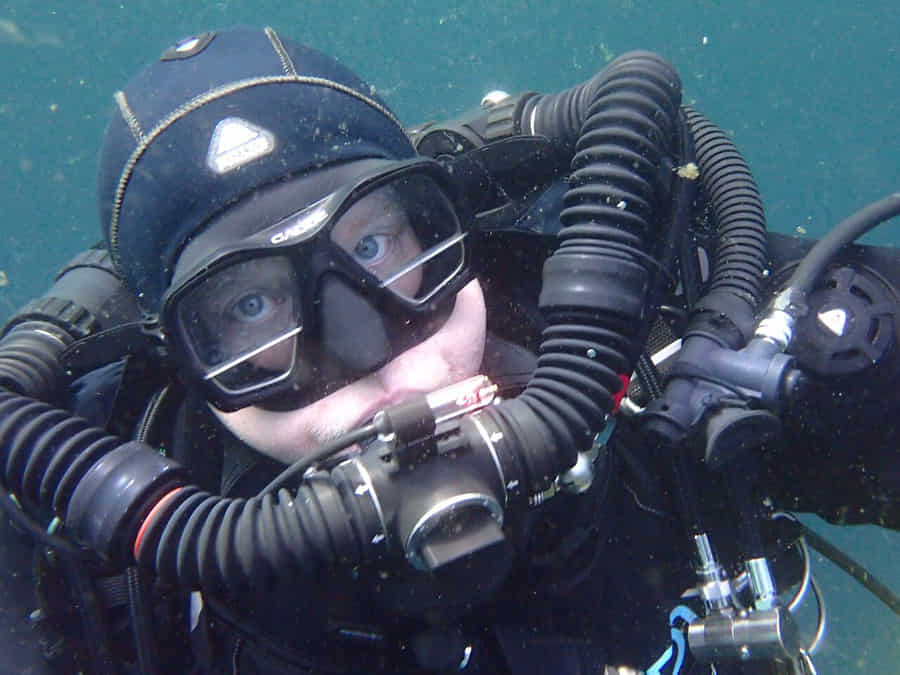Diving is constantly evolving. A big part of that evolution comes from the continuous development of new gadgets designed to improve efficiency, comfort, and the overall underwater experience. One great example is the rebreather—a device that seems straight out of a sci-fi movie and is transforming technical diving as we know it. Want to know why so many divers are making the switch? Keep reading, because things are about to get interesting.
Contents
What is a rebreather and how does it work?
First things first: what exactly is a rebreather? Unlike traditional scuba gear—known as open circuit—which releases your exhaled bubbles directly into the water, a rebreather recycles the air you breathe. Yep, you heard that right—it reuses your exhalation.
How? The rebreather filters out carbon dioxide using a special absorbent, then adds fresh oxygen to maintain a breathable gas mix. The result? You can stay underwater longer, with virtually no bubbles. Perfect if you don’t want to scare off marine life—or if you like feeling like an underwater ninja. Think of it as the electric car of the ocean: silent and discreet.
Advantages of rebreather diving for technical divers
Here’s the good stuff. Using a rebreather offers major technical benefits that can maximize your dive time and quality. Let’s break them down:
- Longer dives: Rebreathers allow for significantly more bottom time compared to regular tanks—even if you’re excellent at air consumption. It’s simple physics: gas usage is far more efficient because you’re not wasting exhaled oxygen.
- Fewer bubbles, more stealth: Marine life tends to get spooked by bubbles. With a rebreather, you’re much stealthier underwater, making it easier to observe marine ecosystems without disturbing them.
- Optimized gas control: You can maintain a consistent gas mix suited to extreme depths. This makes rebreathers ideal for technical divers working with multiple gases and complex decompression procedures. In short: safer and more comfortable descents.
- Better decompression profiles: By maintaining a constant (and optimal) partial pressure of oxygen, you can often reduce your decompression time.
What to consider before using a rebreather
But it’s not all coral and sunshine. Rebreathers come with challenges—and a learning curve you shouldn’t ignore.
- They’re more complex: This isn’t gear you improvise with. It’s not for beginners. Rebreathers require specialized training, constant attention, and rigorous maintenance. If you’re someone who checks their gear “last minute,” this might not be for you—yet.
- The price: Yep, rebreathers are expensive. And not just the unit itself: CO₂ absorbent, oxygen, sensors, maintenance… it all adds up. It’s not a cheap hobby, but it rewards you with unforgettable experiences—especially if you’re deeply passionate about diving.
- Detailed planning required: Rebreather diving demands meticulous preparation. No jumping in without a checklist—small mistakes can have serious consequences. Safety always comes first.
Who can use a rebreather? What training do you need?
Here’s the million-dollar question: can anyone use a rebreather? Technically, yes… but only with the right training.
There are specific courses for each type of rebreather (because not all are the same). Usually, you’ll start with either a Recreational Rebreather or Technical Rebreather course, depending on your experience and goals. Major certification agencies like PADI, TDI, IANTD, and SSI offer well-structured programs to get you started.
To enroll, you’ll typically need:
- Advanced Open Water certification with deep diving experience
- Good buoyancy control
- A Nitrox certification (and often some basic technical diving training as well)
And most importantly: an open mind and a strong willingness to learn. Because yes, rebreathers take you to the next level—but only if you’re ready to put in the work.
A rebreather isn’t just a high-tech gadget—it’s a revolutionary tool expanding the possibilities of both recreational and technical diving. If you’re passionate about the underwater world and looking for a quieter, more efficient, and deeper experience, it might be time to take the leap.









0 Comments